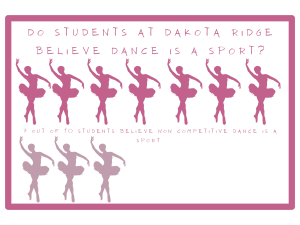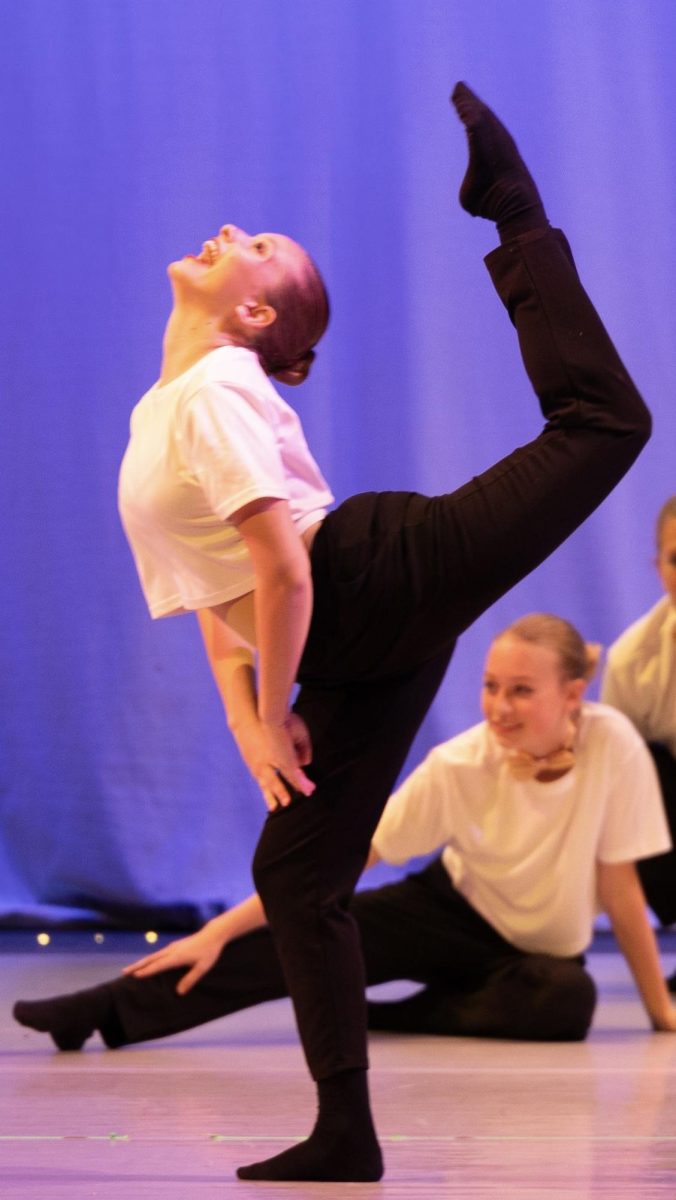What’s the difference between the heat of the sun on a soccer field or the heat of the light on a stage? What about the difference between hours of practice running around a track and the hours of cardio in a dance studio? I could go on and on.
I understand that there are differences between a soccer field and a stage, or running at track practice is different then the cardio in a studio room, but my point is this: What’s the difference if it’s the same or more work?
When I was in seventh grade, my teacher and I got into a debate about whether non-competitive dance is a sport or should be considered one. Me, a non- competitive dancer of eight years, sided with dance being a sport. The exertion and skills needed to be a dancer would very much be the same or more than any other practice of entertainment called a sport. My teacher, however, debated the side that dance is not a sport and is more of an art due to the lack of competition.
Dance is an art, that much is already a fact. It is the practice of emotion and beauty just as much as it is of skill and precision. But just because something is performed as beautiful, does that make it any less of a high-intensity sport? I don’t believe so.
One day, while I was in math, two friends were behind me as I wrote on the board. One friend asked me if I did competitive dance. I told her I didn’t, and her immediate response was “that’s boring.” Her comment was all good fun, but my other friend immediately stepped in and brought up a point that I never really thought about before. He stated that saying non- competitive dance is boring is like saying if lacrosse wasn’t competitive, it would be boring. Now, I understand that lacrosse could be boring without a winner, but would it be boring if it still had all the elements of lacrosse? I would think that there would still be the slashing and checking and the fast-paced aspects of the game, there just wouldn’t be a winner, so would it still be boring?
What about intensity? I’ve said before that I believe that ballet is just as intense as other sports, physically and mentally. Some injuries that are most common in dancers are overuse injuries, spondylolysis or a lower back injury, labral tears or snapping hip syndrome, fractures in legs and pelvis, knee injuries, ect., as stated by Children’s Hospital of Philadelphia. These injuries vary, but overall they are very common. Some injuries from football players are ankle sprain, knee ligament injuries, hamstring strain, groin strain, thigh contusion, head injuries (primarily concussion), neck pain, and shoulder dislocation, according to Fittoplay.org. These injuries vary also. The difference is that dancers have to stay on stage and deal with what hurts after the production is done, which could last for hours. Football and many other sports allow the player to be excited off the playing field, but dancers have to tough through it with a smile. It’s very rare for a dancer to leave the rest of the production because of injury.

Another aspect of a sport is strength and flexibility. Ballerinas and other dancers are known for their flexibility, but their strength often gets overlooked. Dancers usually workout using mostly only body weight exercises or exercises that use their own body weight to work out a muscle group, unlike using weights like a football player would. A study published in the journal Physiology and Behavior found that using body weight exercise improves aerobic capacity, muscle endurance, core strength, and flexibility, as stated in Harvard Health Publishing. This way of exercising is different from how football players, basketball players, etc. practice. Usually they exercise using weights. Dmoose states that bodyweight exercise could possibly be more efficient to build muscles than weight lifting. Some bodyweight exercises are also just as difficult as weight lifting exercises, especially the ones in ballet. So don’t underestimate the strength of a dancer just because they don’t lift weights, which most also do.
I believe it’s irrelevant to consider a sport to be strictly competitive. If you can do something with the same level of intensity mentally, physically and skillfully, what’s stopping it from falling under the same category? I believe that the definition of a sport should be the skill, agility, and entertainment that is performed. This can come in all different forms of art and strength.
Dancers may not play in the sun or run around a track, but they do things that challenge the body and mind. They perform with agility, skill, and strength, easily compared to other sports. The strength, and also the emotion, poured into the work of dancers is admirable and to the same extent as the passion of a basketball player. Overall, dance is an art and a sport. It includes the entertainment, strength, and intensity of any other sport.








